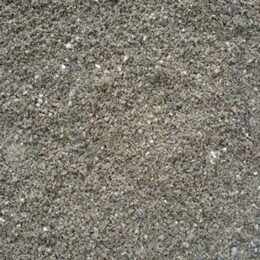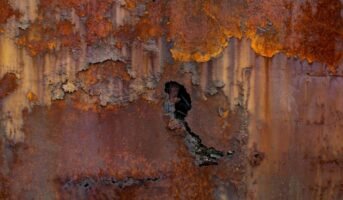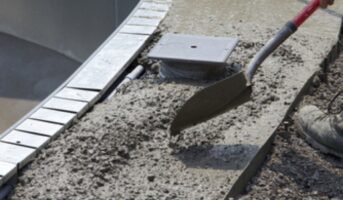Sand is a vital ingredient in many construction projects. It is used as a base for foundations, as a filler material in concrete mixtures, and as an abrasive for cleaning and smoothing surfaces.
Construction sand is typically composed of natural minerals like quartz or feldspar and is usually sourced from riverbanks, quarries, or mines. It can also be manufactured by crushing larger stones into smaller grains.
One of the key characteristics of sand used in construction is its grain size. The size and shape of the sand grains determine the properties of the material, such as its porosity, permeability, and ability to bear weight. In concrete, for example, well-graded sand with a range of grain sizes will produce a mixture with good workability and compressive strength.

Source: Pinterest
Types of sand
Sand comes in a wide range of varieties that are used in construction to give building materials strength and other attributes that make the structure stiff and sturdy. It is crucial to pick sand free of tiny rocks, particles, and other contaminants when using it for building construction. Let’s examine some of the sand kinds used for construction!
1. Concrete sand
One of the sand varieties produced in India from broken concrete is called concrete sand. It is a typical ingredient in cement and asphalt blends. It is a kind of coarse sand that may be used as a levelling basis for layers, patios, and walking paths when combined with cement and water. It may be used to build softer pavements since it has smaller grains than crushed stone sand.

Source: Pinterest
know about: sand filter working
2. Pit sand
Due to its excellent binding properties, pit sand, one form of sand used in construction, is best suited for building construction. It is located 2-3 metres below the surface and is made mostly of gritty sand. It is naturally found in deep holes. It has coarse grains that are rough, sharp, angular, and have good binding characteristics. Due to the iron-oxide present, they appear red-orange.

Source: Pinterest
know about: slow sand filter
3. Natural or river sand
River sand is a fine-quality building sand that is typically discovered close to river banks and streams. One of the fine-graded sands used in building construction, this sand is white-grey in colour. They are mostly employed in masonry and concrete work. They may be utilised for many different brick or block projects, including RCC, plastering, and others.

Source: Pinterest
4. M-sand
Manufactured sand, often known as M-sand, is one of the sand kinds used in buildings in India. This kind of building sand is produced at a factory. It can be used in place of river sand while making concrete. Since the need for high-quality sand has been rising quickly, manufactured sand has been utilised.

Source: Pinterest
5. Utility sand
Sand varieties that are utilised in construction include utility sand. This particular kind of sand is made from high-quality industrial quartz. Due to its homogeneous grain morphologies, this type of building sand offers great compaction and high mechanical qualities. Because they are non-reactive, they may be employed in corrosive conditions. They are entirely made of natural minerals, giving the structure remarkable stability and endurance.

Source: Pinterest
6. Fill sand
A kind of sand called fill sand is used in buildings, primarily for filling. It is made of aggregates and many sand grains. It is made up of very small fragments of rock that have been eroded and broken down. It may mainly be utilised as a base material for paving, pouring concrete, and filling substantial gaps.

Source: Pinterest
Sand bulk density
The density of the sand varies according to its circumstances, which include whether it is wet, dry, or packed.
Sand loses density whether it is compressed, clumped, loose, moist, or dry. Sand is compressed in this area, forcing the grains to create a narrower shape and adding additional material to the volume.
While the locally accessible natural sand has a bulk density of 1.71 kg/m3 and a specific gravity of 2.65 with a fineness modulus of 5.24, it is mostly employed in construction.
When the sand is wet, the water content influences the volume’s overall composition. Here, the various sand conditions’ typical densities are as follows:
- The density of loose sand is 1442 kg/m3. It is dry and most likely has been disturbed or moved to slough off its natural packing process.
- The density of dry sand is 1602 kg/m3. It is in its untouched natural state, where it has dried out and been compacted over time by gravity and rain.
- The density of packed sand is 1682 kg/m3. Sand is compressed here either manually or mechanically.
- Sand that is wet has a density of around 1922 kg/m3. This particular type of sand is now moist after having previously been compacted naturally.
- The density of wet packed sand is 2082 kg/m3. The sand is compressed and nearly saturated with water in this location.
Importance of sand in construction
Sand plays an important role in construction for several reasons:
- As a Fine Aggregate: Sand is a common component of concrete and mortar, used to create a smooth and uniform mixture. It provides stability to the mixture and helps to distribute other ingredients evenly.
- As a Base Layer: Sand is often used as a base layer in construction projects, such as paving and foundations, to create a level and stable surface.
- As a Fill Material: Sand is used to fill gaps and voids, such as in road construction, and to provide support to structures.
- As a Scaffold: Sand is used in foundry work to support molten metal and prevent it from spilling.
- As a Filtering Agent: Sand is used to filter water and other liquids, as well as air and gases, in construction projects, such as in septic tanks and water treatment plants.
- As a Moulding Material: Sand is used to make moulds for casting concrete and other materials.
FAQs
How does the density of sand affect its behaviour?
The density of sand affects its behaviour in terms of settling, compaction, and the way it responds to changes in moisture and temperature. Higher density sands are less likely to shift or settle, while lower density sands are more susceptible to movement.
What is sand made of?
Sand is made of small grains of rock, shell, or minerals.
Is sand a good material for construction?
Yes, sand is an important ingredient in many construction materials such as concrete and mortar.
Housing News Desk is the news desk of leading online real estate portal, Housing.com. Housing News Desk focuses on a variety of topics such as real estate laws, taxes, current news, property trends, home loans, rentals, décor, green homes, home improvement, etc. The main objective of the news desk, is to cover the real estate sector from the perspective of providing information that is useful to the end-user.
Facebook: https://www.facebook.com/housing.com/
Twitter: https://twitter.com/Housing
Email: [email protected]











